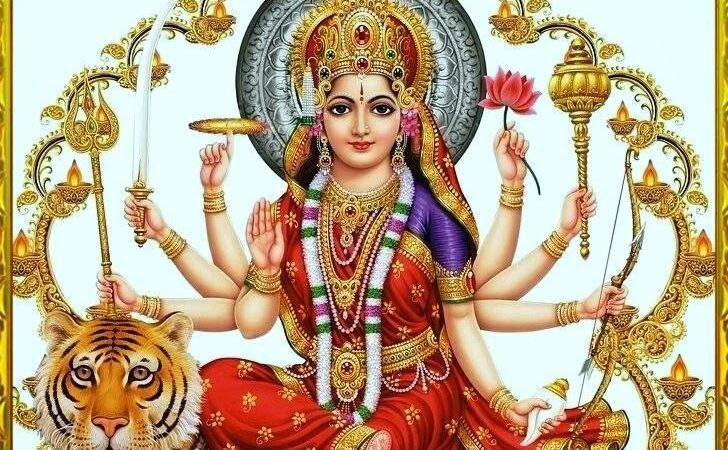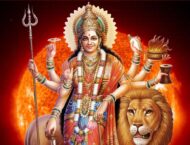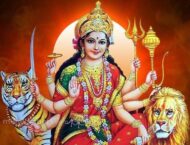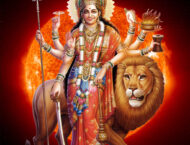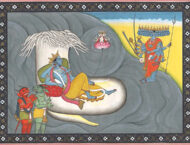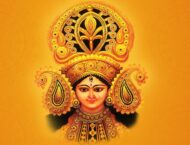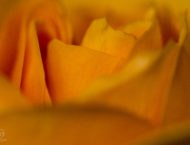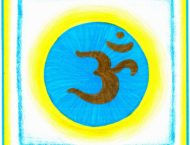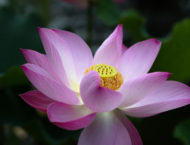Sidelights on Tantra
DEVI-PUJA
The worship of the Devi
The Universal Festival
There is no festival other than the Dasarata that is annually celebrated for ten days with an unsurpassed grandeur and enthusiasm, with religious sentiment and appeal, with the exhibition of the country’s skill in craftsmanship and aesthetic creation presented in the shape of art productions and artistic designs adorning India’s temples and Mutts and homes in their thousands and millions. All over this subcontinent, over this ancient land of Bharata Varsha, from Kanyakumari to Himachal, from Kamarup to Dwaraka, the several sections of Hindus, whatever their differences in caste, creed or social stratum, share the rejoicings of this country-wide jubilee. They offer their worship in accordance with their domestic practice or communal custom and thus maintain the hoary tradition of laying their offerings at the alter of the Divine Mother, in a temple, in a Mutt or Mandir, in their own homes where a sacred and sanctified quarter is set apart for the purpose or in any other manner in obedience to the promptings of their arts.
All agree that it is the Divine Mother to whom the pay their homage and offer themselves to Her, invoking Her blessings to shower upon Her children. To the Shaivite, She is Shiva-Shakti, the consort of Shiva 0or the ardhanga, the inseparable half, of the very body of the great god, Mahadeva.
To the Vaishnavite, She is Sri, the eternal Splendour abiding in the heart of Vishnu, the Supreme Being who maintains the manifestation of this cosmic existence.
To the fullblown Shakta She is the great Goddess, the Mother of all creation, of all the gods and their worlds, who creates, preserves and dissolves, who constitutes and directs all the activities of the universe. She veils Her own truth – the Absolute Truth beyond – from the vision of Her creatures, gods as well as men, and also by Her own Grace unveils Herself, Her transcendental Truth to their vision and experience for the final beatitude, for crossing the Ignorance, for their liberated and illumined life or for their absorption in Her own Blissful and Absolute Being.
Many are Her names, for many are Her aspects, many Her parts and cosmic functionings. But the one Name by which India as recognized and worshipped Her for untold centuries is Durga –the Goddess whom it is difficult to approach with all the thought-vision, the devotional seeking and yogic efforts of man. She is the Devi whom Arjuna at the bidding of Sri Krishna worshipped on the eve of the Mahabharata war, receiving Her blessing and the boon of victory, confirmed by the assurances of the Lord, as it is mentioned in the Bhishma-Parva of the great Epic.
At this distance of time, it is difficult to fix the exact period when the Durga-Puja, the worship of the Divine Mother, began to be celebrated for the first nine nights, navaratra, or ten, dasara, of the lunar month of Ashwin. But there is a tradition that Arjuna took back is Gandiva and other weapons that were lying asleep during the life in incognito of the Pandavas on the tenth day, dasami, of Ashwin at the commencement of Sharat, the autumnal season which, as it progressed, witnessed the great battle of Kurukshetra. Hence, the tenth day that completes the Navaratra Festival of our times is called Vijayadasami, Vijaya being the epithet of Arjuna, the victorious.
T. K. Kapali Sastry
From : COLLECTED WORKS OF T.V.KAPALI SHASTY – Volume 1 – THE BOOK OF LIGHTS-I
PUBLICATIONS – Sri Aurobindo Ashram
Pondicherry – India
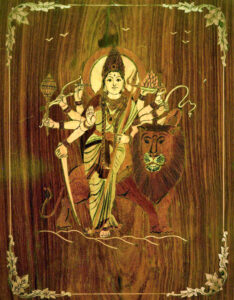
The image of Durga on white background is from Internet.
The image of Durga carved on wood is of the Wisdom Cultural Association.


